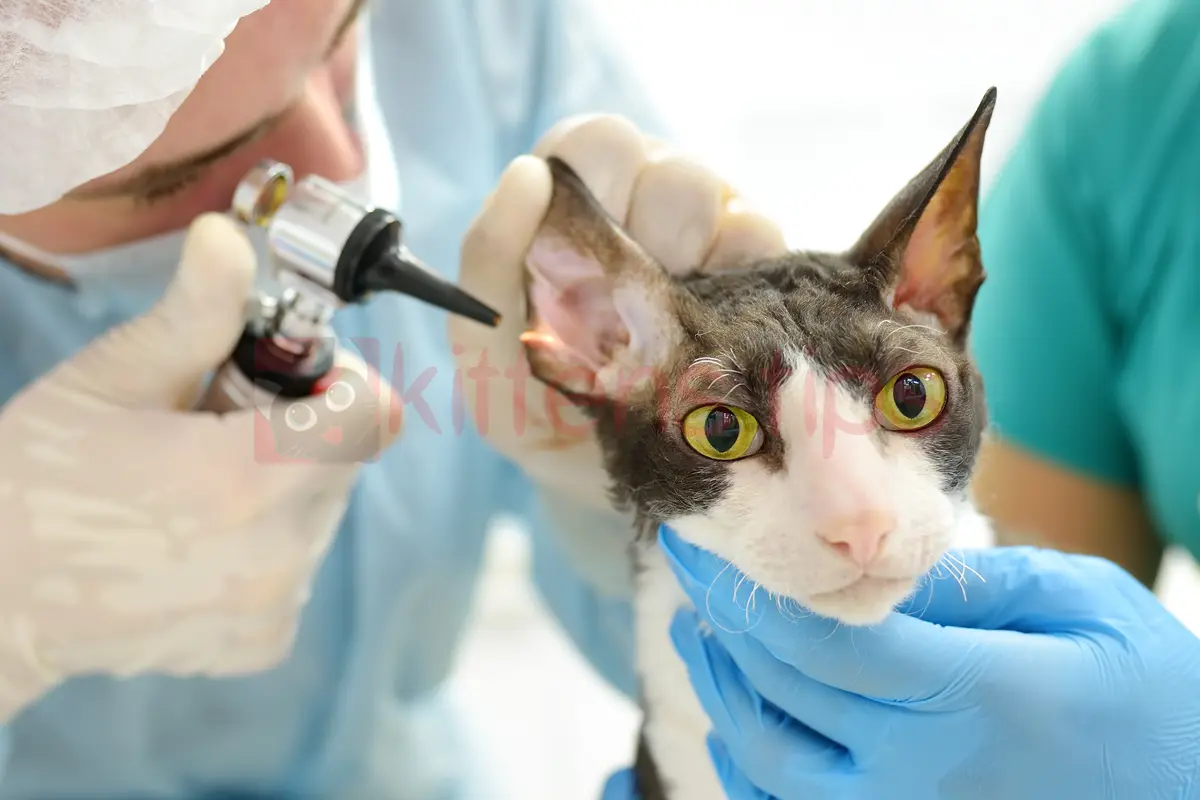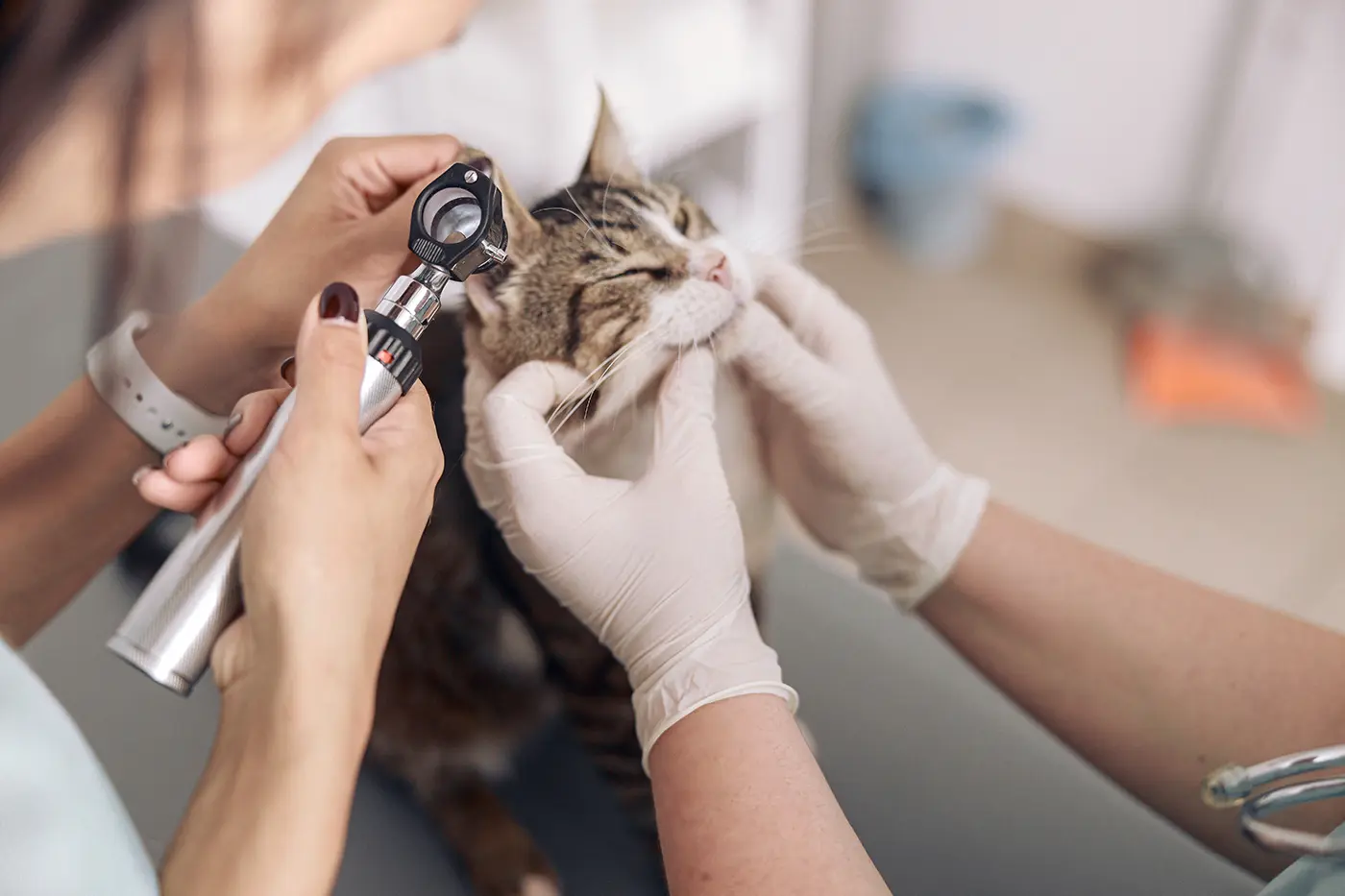
Mange in Cats – Types of Mange and Treatment
Mange in cats is a highly contagious parasitic dermatological condition. Not only can it affect the health of cats but it can also quickly spread to other animals in contact, such as dogs or other domestic mammals. What makes feline mange even more concerning is its potential transmission to humans, causing serious dermatological issues. Therefore, when a case of mange is identified in a cat, it’s essential to take immediate measures to isolate and treat the affected animal, as well as rigorously sanitize the surrounding environment. This is crucial to prevent the potential transmission of the infection to both other animals and family members who come into contact with the affected cat.
In addition to ear mites, which are the most common type and have been covered in a separate article, there are other types of mange equally dangerous that can significantly impact the quality of life for cats.
Table of Contents
Mange in Cats – Types of Mange
There are several types of mange that can affect cats, but the most common ones include ear mites (Otodectic mange), notoedric mange, sarcoptic mange, demodectic mange, and Cheyletiella mange.
Ear Mites (Otodectic Mange)
Ear mites, known as otodectic mange, affect a cat’s ears and are caused by otodectic mites. Symptoms include ear itching, head shaking, and ceruminous discharge in the ears. The discharge may resemble coffee grounds (dark, dry material).
Notoedric Mange in Cats
Feline notoedric mange can be caused by Notoedres cati mites and can lead to intense itching, alopecia, and skin irritations, especially around the head and neck area.
Demodectic Mange
Demodectic mange, also known as “red mange,” is caused by Demodex mites and can be localized (affecting a specific area of the skin) or generalized (affecting the entire body). It manifests as hair loss, redness, and skin irritations.
Cheyletiella Mange
This is a type of mange seen in cats caused by the parasite Cheyletiella blakei and is often referred to as “walking dandruff.” This condition can be mistaken for dandruff because the mites leave a white layer on the cat’s fur in their wake. Therefore, it’s crucial to be extremely attentive and able to distinguish between these two dermatological issues.
Trombiculiasis
Trombiculiasis is a condition caused by Neotrombicula larvae mites and is characterized by the appearance of specific skin lesions. These lesions can take the form of papules or pustules and are accompanied by pruritic abrasions, meaning scratches or wounds mainly on the abdomen, limb extremities, head, and ears. These mites are known as “harvest mites” because they attach themselves to the skin of animals and, at times, humans, causing significant discomfort. Trombiculiasis is a dermatological issue that requires the attention of a veterinarian for proper diagnosis and treatment.
Mange in Cats – Treatment
The treatment for mange varies depending on the specific type of parasite causing the condition. Since there are several types of mites that can trigger mange in animals, including cats, the therapeutic approach must be tailored to the identified pathogen. However, there are common principles in treating mange in cats.

The first step is always an accurate diagnosis, which is achieved through clinical examination and/or laboratory tests. After identifying the type of parasite, the veterinarian will recommend the appropriate treatment. This may include the administration of antiparasitic medications in the form of lotions, shampoos, or pills, as well as topical or oral treatments.
In cases where the condition has been detected in a cat, it’s important to take measures to prevent the spread of the parasite throughout the household. This may involve thorough sanitation of the surrounding environment and, in some cases, prophylactic treatment for other animals in the house. It’s also crucial to strictly follow the veterinarian’s recommendations regarding medication administration and the duration of treatment. Even if symptoms disappear before completing treatment, it’s important to continue the treatment to ensure that all parasites have been eliminated.
In conclusion, the treatment for mange in cats depends on the specific type of parasite and should be determined by a specialist. It is crucial to consult a veterinarian for an accurate diagnosis and to establish an appropriate therapeutic plan for your cat.



